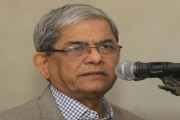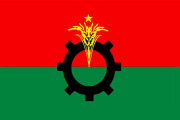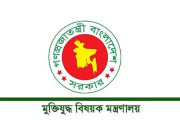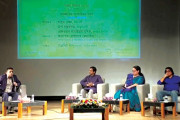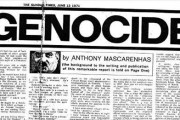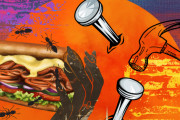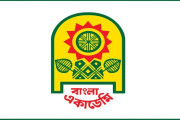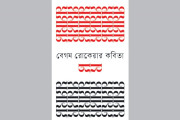When war broke out in 1971, Tripura, a Union Territory (UT) back then, had a population of 15.56 lakhs, and according to official figures, an estimated 13 lakh refugees poured into Tripura – its borders had been unsealed under instructions of the UT Government. Refugee camps were opened in various parts of Tripura such as Sabroom, Belonia, Melaghar, Udaipur, Bishramganj and Mohanpur, to name a few. However, it wasn’t just in taking in refugees that Tripura played a role in the liberation of Bangladesh.
Tripura’s Reaction: The Political Front
Tripura was one of the first to speak out on Operation Searchlight and the massacres that were occurring in then East Pakistan. On March 29, 1971, then Tripura Chief Minister Sachindra Lal Singha issued the following statement in the Legislative Assembly – “Our heart goes out in sympathy for the people of East Pakistan at this hour of their trial. I may reiterate that we stand for democracy and socialism and we condemn any force that stand in the way of these noble ideals in any part of the world.”
The following day, he moved a resolution that condemned “the denial of human rights to the people of East Bengal and atrocities committed by Yahya Khan” and asked the government of India “to recognise the newly-formed Government of Bangladesh headed by Sheikh Mujibur Rahman.”
This resolution was welcomed by thunderous applause, regardless of political affiliations.
Awami League leaders soon realised that an independent government was the need of the hour to further their struggle for liberation, and they broached the matter with the Tripura Chief Minister Sachindra Lal Singha, who was actually an alumnus of Comilla Victoria College. He sought the advice of concerned authorities in Delhi and conveyed it to the Bangladeshi leaders. In a secret meeting held at Room No 3 of Agartala’s Old Circuit House on April 10, 1971, the independent government of Bangladesh was formed. It took oath of office on April 17 in what is now known as Mujibnagar. The Old Circuit House is now flanked by the Tripura Governor’s official residence and Bangladesh’s Assistant High Commission.
Doctors Beyond Borders
Medical practitioners played an important role, not only in providing services in the camps, but by serving a legion of wounded freedom fighters and raped women in the GBP Hospital. A medical team led by Dr Rathin Datta, which comprised of Dr Hemendu Shekhar Roy Chowdhury, Dr Pramathesh Roy, Dr Manoj Chakraborty and others, worked day and night amidst a fragile hospital infrastructure.
Dr Datta’s contribution was, at the time, deeply appreciated by then Acting President Syed Nazrul Islam and Prime Minister Tajuddin Ahmed, and he was given the ‘Friends of Bangladesh’ award by the Bangladesh Government in 2012.
“I was nudged by a lady at the award-receiving ceremony, and when I turned back, she bent down to touch my feet. Her granddaughter was with her. I was extremely taken aback and inquired about her identity. She affectionately said, ‘Abba, I was a ten-year old girl in 1971 who was raped and died. But you resurrected me to life with your service and love.’ Her words pierced my heart and left me in tears.”
“I remembered her vaguely. She was only a little girl, but she was gang raped, left senseless and bleeding profusely. There were few signs of revival, but the team was determined to save her,” he added.
For his magnanimous service, the doctor was given the Padmashree by the Government of India in 1991.
Media for Freedom
During a nation’s struggle for independence, representing the voices of revolution to the rest of the world can make all the difference. In 1971, the press of Tripura personified the adage, “the pen is mightier than the sword”.
Dainik Sambad, the largest circulated daily of Tripura, ran daily stories on the Liberation War. Its deceased Editor Bhupen Dutta Bhowmik, in an interview with The Statesman on June, 1971, presciently said, “The liberation of Bangladesh in the near future is a reality and a must. The national press failed to assess the situation.”
The Statesman itself also enlightened the entire nation on regular war-events in Bangladesh through its Agartala correspondent, Satyabrata Chakraborty.
On March 27, 1971, the Dainik Sambad ran a story titled, “Swadhin Bangla Betar Kendra’s first declaration: Bangla is free.” This news took the entire state by storm, and international media houses like Reuters, BBC, Baltimore Sun et al thronged to Dainik Sambad for more updates.
Journalist Anil Bhattacharjee also covered the Liberation War for the national media vis-à-vis Press Trust of India (PTI), The Hindu and Jugantar. His residence at Melarmath turned into a control room for Liberation War activities, and he opened his doors to Bangladeshi freedom fighters, leaders and intellectuals. It was at his residence that Indian journalists Jyoti Prasad Saikia, Bikach Chaudhuri and Subhash Chakrabarti, along with Bangladeshi journalist Abdulla Al-Harun, wrote ‘Stop the Genocide’ on April 2, 1971. This story went on to be reprinted by the Baltimore Sun and Deustche Velle and played a huge role in awakening the world’s conscience regarding Bangladesh.
Finally, Bangladesh’s misery and afflictions were shown to the world through the lenses of eminent photographer Robin Sengupta, whose photos were published in newspapers worldwide.






















